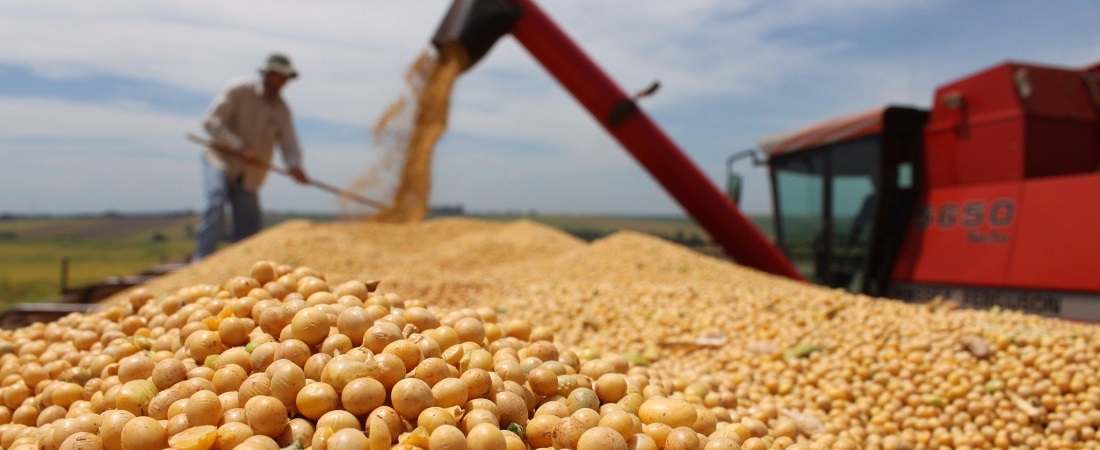
Decline in Chinese Soybean Purchases Slows Brazilian Sales, but Exchange Rate Supports Growth
Jan, 21, 2025 Posted by Gabriel MalheirosWeek 202504
China’s early purchases of U.S. soybeans in late 2024, driven by concerns over trade policies during Donald Trump’s second term, have temporarily reduced its demand for Brazilian soybeans at the start of the year. Despite this, Brazil’s soybean trading pace remains ahead of the same period in 2024, fueled by favorable exchange rates.
According to Safras & Mercado, sales of the 2024/25 soybean harvest have reached 35% of the projected output, amounting to 60.83 million tonnes. This figure surpasses the 29.1% recorded during the same period last year but still falls short of the five-year average of 39%.
China, Brazil’s largest soybean buyer, is currently absent from the market after importing a record volume in 2024 to preempt potential tariffs promised by Trump. Rafael Silveira, an analyst at Safras & Mercado, predicts that Brazilian soybean sales will pick up starting in February as the harvest gains momentum. “The Chinese are pragmatic and will wait for the right time to shift demand to Brazil. February will be the peak of commercialization, and the current exchange rate will also drive demand for Brazilian soybeans,” he explained.
Exchange Rates Drive Prices
The strong U.S. dollar has been Brazil’s primary driver of higher soybean prices. Anderson Galvão, CEO of Céleres, estimates that every 10-cent increase in the dollar adds an average of R$5 per 60-kg sack. “The exchange rate will continue to support prices at the start of the harvest,” he said.
Safras & Mercado projects that Brazilian soybean exports will reach 107 million tonnes in the 2024/25 harvest, with 80 to 81 million tonnes destined for China. This would surpass the 77.5 million tonnes exported to China in the previous cycle, driven by expectations of a record Brazilian harvest.
Plínio Nastari, president of Datagro, emphasized China’s reliance on Brazilian soybeans and expects purchases to resume as the harvest progresses. “Even with early purchases from the U.S., China will inevitably return to Brazil for soybeans,” he said. In 2024, 73.4% of Brazilian soybean exports went to China, a 2.6% decline from 2023.
Geopolitical Uncertainty Slows Producer Decisions
While favorable exchange rates boost sales, geopolitical uncertainties surrounding Trump’s trade policies are causing Brazilian producers to tread cautiously. From LC Guerra Corretora de Cereais, Leandro Guerra noted that many producers are wary of potential new U.S. tariffs on China. “Without this geopolitical factor, early sales would likely exceed 40%,” he observed.
The memory of the 2018 trade war during Trump’s first term also looms large. “Back then, we saw aggressive demand for Brazilian soybeans, with port premiums spiking by as much as 200 points. It was a rapid market shift, and producers are keeping a close eye on a similar scenario,” Guerra added.
Tiago Medeiros, director at Czarnikow, echoed this sentiment, saying, “Everyone is working under the assumption that the sanctions from Trump’s first term could return.” However, he pointed out that speculation about a renewed trade war has yet to impact current Brazilian soybean sales significantly. “The effects will be felt in the next cycle,” Medeiros projected.
Czarnikow’s data shows that sales of the current harvest are lagging, with 35% sold compared to 40% during the same period last year.
As the peak harvest season approaches, Brazil’s soybean market remains caught between immediate gains driven by the exchange rate and the uncertainties of global geopolitics.
Source: Globo Rural
-
Ports and Terminals
Mar, 16, 2021
0
Argentina’s TecPlata receives service connecting Paraguayan and Brazilian ports
-
Ports and Terminals
Mar, 15, 2022
0
Intermodal South America reopens in a hybrid format in 2022
-
Meat
Apr, 05, 2024
0
US Senate Votes to Ban Paraguay Beef
-
Grains
Dec, 21, 2018
0
Drought causes Paraná to lower soybean output forecast



